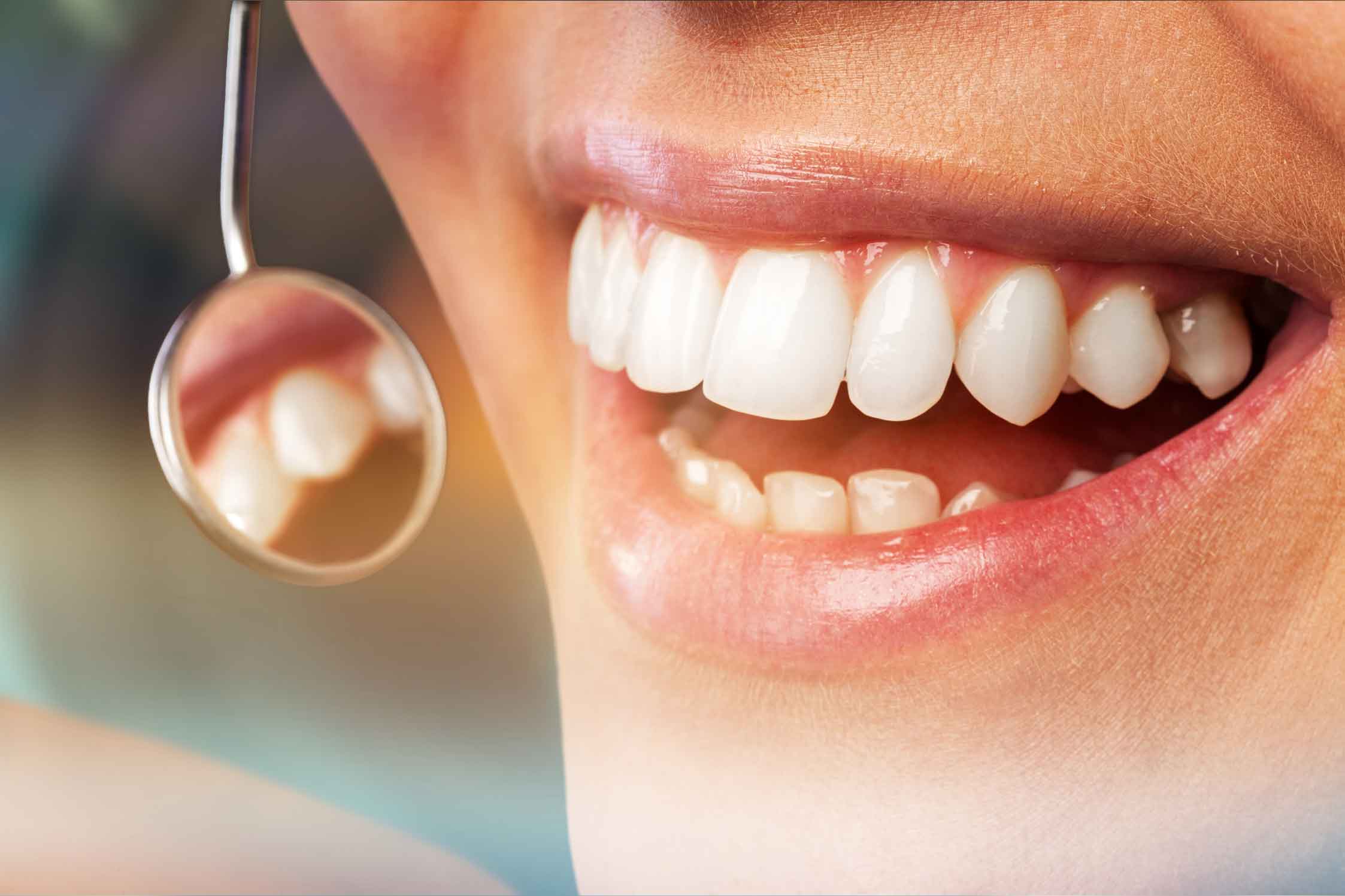Gum Disease
Gum disease is a very common condition where the gums become swollen, sore or infected
Gum Disease
Gum disease is a very common condition where the gums become swollen, sore or infected
The depth of the periodontal pockets around teeth are the main indicator for the progression of gum disease, and for the level of destruction of periodontal tissues. One way of detecting gum disease is measuring the depth of “pockets” between the tooth and gum. In gum disease these pockets increase in depth and some bleeding present
1. Healthy Gums
Healthy gums have shallow pockets around the teeth between 1-3mm in depth. There is no inflammation or bleeding of the gums during brushing.
2. Gingivitis
In gingivitis, in other words early gum disease, the gum becomes inflamed and may bleed more. There may be a slight increase in the pocket depths. However, there is no bone loss at this stage.
3. Periodontitis
In periodontitis there is greater inflammation and increased pocket depths. The underlying bone is lost as gum disease progresses which ultimately can result in painful collections of pus, receding gums, mobility and loss of teeth.

Initial Consultation
The first appointment will always be a periodontal consultation. This will involve a comprehensive discussion to ensure we are aware of your personal concerns and aims of treatment. This will be followed by a detailed periodontal examination which involves measuring the position of the gums and determining depths of the pockets.
It is important that before any treatment is suggested, the severity and extent of the disease is established. X-rays and photographs may also be taken on this appointment. Once all the information has been obtained Dr Krynauw will discuss the findings in detail and suggest any treatment that may be required. He will also cover any questions you may have including costs and timings.
Individually Tailored Oral Hygiene Routine
In the first appointment and subsequent visits Dr Krynauw and his team will work with you to ensure you feel confident that you are effectively cleaning your teeth. We will advise you of tooth brushing and interdental cleaning aids that are most suited to your needs. This is one of the most important aspects of your treatment.
“
Really impressed with these guys. Not having a regular dentist in these parts I was able to book an emergency appointment within a few days to fix a sheared front tooth. I saw Dr Roshnee who has a lovely friendly manner and did a fab job fixing me up with a tooth coloured composite filling. The two receptionists that I dealt with, Ben and Jess, were both friendly and efficient. First class all round. Many thanks.
David Ashford
“

Dr Jakobus Krynauw (Kray)
Founder, Owner, Clinical Director
Dr Kray is an energetic and motivated Dentist with a special interest in Periodontology (gum disease), Oral Surgery and Dental Implants.
Dr Kray completed his dental degree with honours in Periodontology at the University of Pretoria in South Africa. Subsequently, he completed a diploma in Oral Surgery also at his alma mater. Currently he is completing his final year of Specialist training at Kings College London, where his duties include teach and specialist hospital care for periodontal and implant patients.
Always off on another adventure, his hobbies include kite surfing, flying (not like superman), sailing (this is a new hobby), and basically anything that seems scary (anything that can kill you seems like fun to him).
Bedside manner with this clinician is radically different to anyone you are likely to encounter, with a background in phobic patients he has developed a clinical atmosphere aimed at alleviating anxiety by employing dark humour and kindness, all while maintaining a professional organised atmosphere.
His favourite quote is “The person saying it cannot be done should not interrupt the person doing it”
Non-Surgical Periodontal Therapy
If you have been diagnosed with periodontitis, then treatment will usually begin with non-surgical periodontal therapy which you may know as “deep cleaning”. This involves removal of the bacteria and hardened calculus around and below the gum line. It is technically referred to as scaling and root surface debridement. It is important that the pockets and root surfaces are cleaned effectively. Therefore this usually requires local anaesthetic to ensure you are comfortable throughout the process. The aims of this treatment are to reduce the depth of the pockets and increase the ability to maintain good oral hygiene in the area.
Occasionally, this treatment may be recommended alongside antibiotic tablets. This is usually if you have a particularly aggressive disease or one that has not responded with previous treatment. The outcome of this treatment will be re-assessed 8-10 weeks later. This is an important stage to revaluate the need for any further treatment. In many cases the non-surgical treatment will be suggested to be repeated as persistent disease may respond to a second round.
1. Maintenance
When active treatment is complete, supportive therapy maintains the health improvements achieved. This appointment will involve measuring the gums to ensure any relapse is picked up early, removing any bacterial deposits and re-treating any developing pockets. The recall interval for this is usually every 3 months but this will be specific to your needs and risks of gum disease. This can be provided by a hygienist under Doctor’s supervision or a supportive care plan can be sent back to your referring general dentist to carry out this phase.
2. Gum Recession
If your teeth start to appear longer than they used to, your gums may have started to recede. With recession you may notice sensitivity and discomfort when brushing. Recession may also be of an aesthetic concern depending on which teeth are affected.
Gums may start to recede for different reasons, including poor oral hygiene and the development of gum disease. A combination of a thin gum biotype and/or overly aggressive brushing and flossing, abnormal tooth position, trauma from piercings can also cause gum recession.
There is a variety of ways to manage recession and correction back to the original position is not always possible. The first stage of treatment involves optimising your brushing technique around the receded teeth. Sensitive toothpastes may also be suggested. On many occasions this is all that is needed, however, some cases will benefit from a gum graft procedure.
3. Gum Grafting
There are two main types of gum grafts. The first type is known as a free gingival graft and aims to thicken the receded gum with a graft from your palate. This graft is stitched in place and left to heal for 2 weeks. This graft has limitations such as limited coverage of the recession defect. Free gingival grafts also have a colour mismatch as the skin on the palate has lighter colour. However, this procedure is quicker to perform and is an excellent way to get a thicker gum type around the receded gums. This can make brushing much more comfortable and prevent further recession.
Alternatively, a gum graft procedure to partially or completely cover the area of recession can be done. There are many techniques that are suggested for this type of graft. Dr Krynauw chooses to use a tunnelling procedure which is associated with excellent results. A small graft from the palate called a connective tissue graft is used to thicken and cover the gum in the area of recession. The graft is secured in place and the gum is lifted to cover the graft and recession. There is no colour discrepancy and is much more effective at covering the recession around teeth.
An appointment with a periodontal specialist will be able to advise whether you would benefit from gum graft surgery.
Frequently Asked Questions About Gum Disease
Is gingivitis reversible?
Gingivitis is the only stage of gum disease that can be reversed. By working closely with a dentist or periodontist, and following their instructions for a proper oral hygiene routine, most people can restore the health of their gums. When left untreated and the gum disease progresses, causing the gums to become irreversibly damaged.
How do you prevent gingivitis?
Gingivitis can be prevented by practicing good oral hygiene. This means brushing twice a day and clean interdentally or more if instructed by your periodontist. Regular professional teeth cleanings and bi-annual visits to the dentist are also essential for keeping your gums and teeth healthy.
What are the symptoms of gingivitis?
Gingivitis, or early gum disease, often produces symptoms such as red, tender gums and bleeding while flossing. You also might notice bleeding while eating hard or crunchy foods. Your dental hygienist might tell you that you have some pockets in your gums where they attach to your teeth.
What are the symptoms of periodontitis?
As gum disease progresses, it can turn to periodontitis. Symptoms are more severe than those found with gingivitis. Pockets will get larger and you might notice puss seeping out between your gums and your teeth. Your teeth might get loose. You might get sores in your mouth or struggle with a foul taste or smell coming from your mouth.
What are the dangers of gum disease?
Periodontitis can cause tooth loss, serious infections and affect your overall health. In rare cases, the infection can spread. There are also indications that dental infections can cause heart problems. It’s important to have your gum disease treated promptly by a periodontist.
What causes gum disease?
Increase risks includes smoking and poor oral hygiene. There are also risk factors you might not be able to control, such as genetics, age and underlying diseases like diabetes or heart disease.


